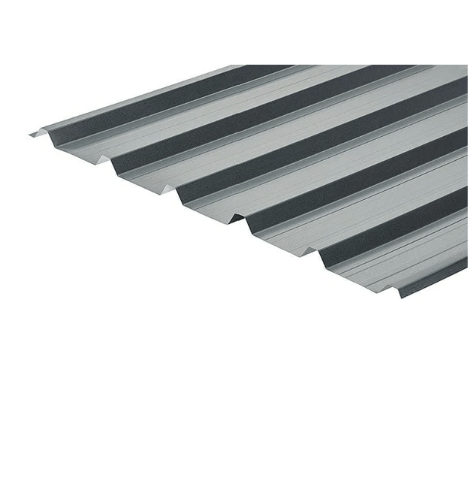When it comes to roofing, understanding your roof's pitch is crucial. Roof pitch, which describes the angle or slope of a roof, plays a vital role in selecting roofing materials and ensuring the stability and functionality of your roof.
In this guide, we'll break down what roof pitch is, how to measure it, and why it matters.
Why Roof Pitch Matters
Roof pitch isn't just a technical detail; it has practical implications for your roofing project. The pitch of your roof affects the choice of roofing materials and the overall design of your building. Here's why it matters:
1. Material Selection
Different roofing materials require specific pitch angles for effective installation. If you choose the wrong material for your roof's pitch, it could compromise the roof's durability and performance. For instance, flat roofs (with a pitch range of 0-10 degrees) require materials that can withstand standing water and debris.
2. Design Impact
Roof pitch also influences the aesthetic design of your building. The angle of your roof can significantly affect the overall appearance of your structure. Whether you're starting a project from scratch or working with an existing building, understanding roof pitch can impact your design choices.
The Roof Pitch Formula
Roof pitch is essentially the slope or angle of your roof. It's typically measured using two essential components: the rise and the run. The rise is the vertical distance from the base of the roof to the ridge, while the run is the horizontal extension of the roof. To calculate the roof pitch, you'll use these values in a formula.
Step 1: Roof Pitch as a Decimal
To calculate roof pitch as a ratio, you'll first need to find the pitch as a decimal. Use this formula:
Pitch Decimal = Rise ÷ Run
For example, if the rise is 3 meters, and the run is 5 meters:
3 (rise) ÷ 5 (run) = 0.6 (pitch decimal)
Step 2: Roof Pitch Decimal to Ratio Conversion
Roof pitch expressed as a ratio represents the 12-inch horizontal distance for every vertical change. To convert the pitch decimal to a ratio, multiply it by 12. Using the previous example:
0.6 (pitch decimal) x 12 = 7.2
So, the roof pitch, in this case, is 7.2:12.
Measuring Rise and Run
Now that you understand the formula, let's explore how to measure the rise and run. There are several methods to do this safely:
1. Gable End Measurement
Measure the roof pitch ratio from the gable end of the building. Use a spirit level and a speed square to measure 12 inches from the roof's surface toward the eaves. Create a horizontal line with the spirit level and use the square to measure the vertical rise to the point where it meets the spirit level. For example, a rise of 5 inches results in a pitch ratio of 5:12.
2. Roof Measurement
If you're already on the roof, you can use a spirit level and ruler to measure the pitch. Again, measure 12 inches from the roof's surface toward the eaves and mark it on your spirit level. Then, measure down from the 12-inch mark until you reach the roof surface. Alternatively, consider using a smartphone app to calculate the slope angle quickly and accurately.
3. Attic Measurement
To measure the pitch from inside an attic room, place a spirit level against the underside of the roof sheathing or rafter. Measure 12 inches horizontally along a level plane. From the 12-inch mark, measure upwards to the roof rafters to determine the rise. For instance, a rise of 9 inches results in a pitch ratio of 9:12.
Understanding Roof Pitch Ratio
Roof pitch is often displayed as a ratio, indicating how many inches the roof rises vertically across a horizontal length of 12 inches. This ratio can also be measured as an angle in degrees.
Roof Pitch Conversion Chart
Here's a handy conversion chart to help you understand roof pitch ratios and their corresponding degrees:
- 1:12 - 4.76 degrees
- 2:12 - 9.46 degrees
- 3:12 - 14.04 degrees
- 4:12 - 18.43 degrees
- 5:12 - 22.62 degrees
- 6:12 - 26.57 degrees
- 7:12 - 30.26 degrees
- 8:12 - 33.69 degrees
- 9:12 - 36.87 degrees
- 10:12 - 39.81 degrees
- 11:12 - 42.51 degrees
- 12:12 - 45.00 degrees
Roof Pitch Calculators - Apps
Measuring roof pitch accurately can be made more accessible with the help of smartphone apps. Here are some recommended apps for measuring roof pitch:
-
Pitch Gauge (iOS and Android): This app uses your phone's built-in leveler to measure roof pitch and provide readings. It can also calculate square meterage.
-
Clinometer + Bubble Level (iOS and Android): This app calculates roof pitch as an angle in degrees. It offers two modes for different measurement scenarios.
-
Simple Inclinometer (Android): This app provides a straightforward way to measure the angle of a roof slope by aligning your phone with the roof's pitch.
-
Bubble Level - Spirit Level (iOS and Android): This app uses a bubble spirit level to measure roof pitch along both the x and y axes, making it useful in tight spaces.
Roofing Sheets by Roof Pitch
Different types of roofing sheets are designed for specific roof pitch angles. Here's a breakdown of roofing sheet pitch requirements:
-
Box Profile Roofing: Suitable for pitches of 4 degrees or above, ideal for efficient water runoff on low-lying roofs.
-
Corrugated Roofing: Requires a minimum pitch of 10 degrees, popular for various applications, from sheds to agricultural buildings.
-
Tile Form Roofing: Designed for pitches of 12 degrees or more, offering an authentic pantile appearance.
Understanding and measuring roof pitch is fundamental to the success of your roofing project. Whether you're a homeowner planning a renovation or a professional roofer, knowing the pitch angle is crucial for choosing the right materials and ensuring the structural integrity of your roof. Use the formula, methods, and apps discussed here to measure roof pitch accurately and make informed decisions for your roofing needs.

